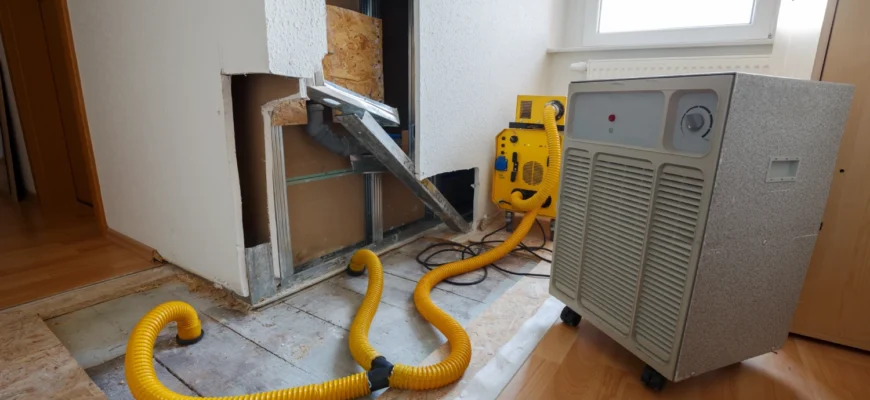Water damage can strike homes and businesses unexpectedly, caused by natural disasters, plumbing failures, or other accidents. When it happens, swift action is crucial to prevent further damage. This is where water mitigation comes in – a process designed to minimize the impact of water damage. Central to this process is a range of specialized equipment. This article explores various water mitigation tools and their uses.
1. Water Extractors
- Purpose: These are powerful tools used to remove standing water from a property. They come in various sizes, from portable extractors to truck-mounted units, capable of handling large-scale water removal.
- Usage: Extractors are used in situations like flooding, pipe bursts, or after firefighting efforts to quickly remove water.
2. Air Movers and Axial Fans
- Purpose: Air movers and axial fans are used to facilitate air circulation and speed up the drying process.
- Usage: They are particularly effective in drying out walls, carpets, and furniture. By increasing air flow, they help in reducing moisture levels and preventing mold growth.
3. Dehumidifiers
- Purpose: Dehumidifiers play a critical role in extracting moisture from the air.
- Usage: Used alongside air movers, they help maintain optimal humidity levels, crucial for drying out materials and preventing mold and mildew.
4. Moisture Meters
- Purpose: These devices are used to detect moisture content in various materials.
- Usage: Essential for assessing the extent of water damage, they guide the mitigation process by identifying areas that need focused drying efforts.
5. Air Scrubbers
- Purpose: Air scrubbers remove airborne particles, including mold spores, from the air.
- Usage: They are vital in maintaining air quality, especially in situations where water damage has led to mold growth.
6. Thermal Imaging Cameras
- Purpose: These cameras help in detecting water in hidden areas.
- Usage: Ideal for identifying water behind walls or under floors without invasive methods, aiding in comprehensive water damage assessment.
7. Disinfectants and Cleaning Agents
- Purpose: These are used to clean and sanitize areas affected by water damage.
- Usage: Essential for restoring hygiene, especially in cases of sewage or contaminated water incidents.
8. Portable Power Generators
- Purpose: They provide an essential power source for other equipment in areas where the main power supply is disrupted.
- Usage: Crucial in ensuring uninterrupted mitigation efforts, especially in disaster-hit areas.
9. Sump Pumps
- Purpose: Used for continuous water pumping in cases of severe flooding.
- Usage: Sump pumps are often installed in basements to prevent water accumulation during heavy rains or floods.
Water mitigation is a critical process requiring specialized equipment. Each tool serves a specific purpose, from water extraction to drying, moisture detection, and air quality maintenance. Understanding the role of each piece of equipment helps in effectively managing and mitigating water damage, ultimately protecting properties from long-term harm and health hazards. As water-related incidents can occur without warning, being prepared with the right tools and knowledge is key to a swift and effective response.
